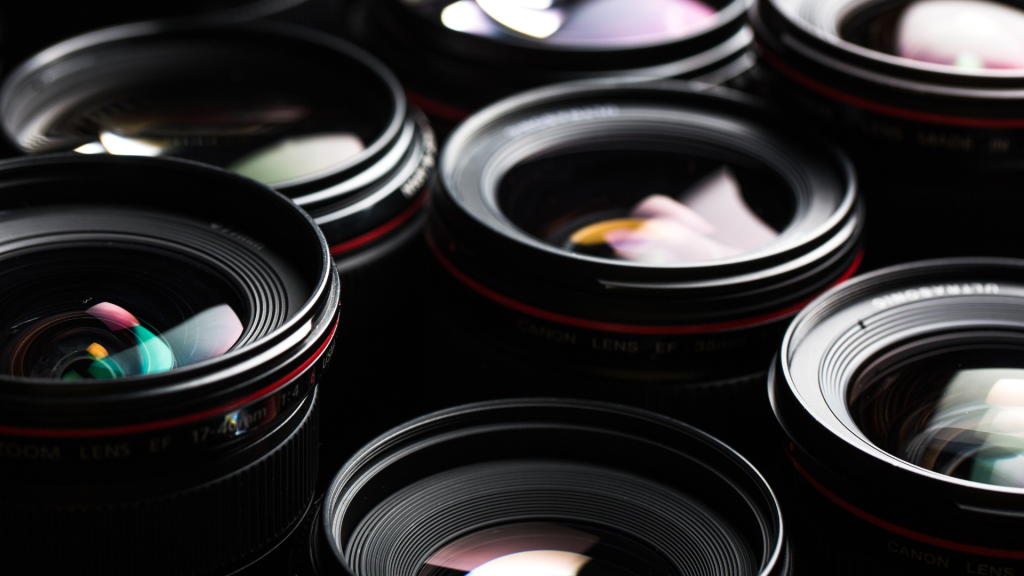The world of photography is vast and ever-changing, with new technologies and equipment constantly becoming available. If we want to take our photography skills to the next level, we’ll need the right lenses – and that means finding the perfect combination of features, specs, and price. In this blog post, we’ll discuss some of the best camera lenses for different types of photography, from landscape to portrait photography.
Capturing Stunning Landscapes with Wide-Angle Lenses
If we want to capture stunning landscapes with our camera, Wide-Angle lenses are a great option. Wide-angle lenses allow us to capture a large portion of the scene in front of us, giving us a more expansive view that can be valuable for capturing panoramic shots or expansive vistas.
Many types of Wide-Angle lenses are available, so choosing one that will fit our photography style and needs is essential. Some examples of popular Wide-Angle lenses include the 16mm f/2.8 Lens for APS-C cameras, the 24mm f/1.4 Lens for Full Frame cameras, and the 35mm f/1.4 Lens for Micro Four Thirds cameras.
Once we’ve chosen the Wide-Angle lens, it’s essential to understand how it works and how to use it to capture stunning landscapes. For example, if we’re using a 16mm lens on an APS-C camera, we’ll need to crop the image down to 8×10 inches to fit on a standard photo paper size. Similarly, if we’re using a 35mm lens on a Micro Four Thirds camera, the images will be sized at 16×20 inches due to the smaller sensor size in this format.
Zooming in on the Details with Telephoto Lenses
Telephoto lenses are an excellent option for photographing details. They can provide us with a wider angle of view, which can help us capture more of the scene. However, they can also be quite expensive, so it’s essential to choose the right one for our needs. For landscape and nature photography, wide-angle lenses are ideal. In contrast, portrait and close-up photography are better served by telephoto lenses. If we’re shooting close-up shots, a telephoto lens will provide a closer perspective, making it easier to focus on the subject. A telephoto lens is ideal for portraiture and close-up photography because it lets us zoom in on the subject without moving closer.
Macro Magic: The Ideal Lenses for Close-Up Photography
Macro photography is all about capturing the details of small subjects. For this type of photography, it’s ideal to use lenses designed for close-up work. The Panasonic Lumix DMC-GH4 Micro Four Thirds Camera is perfect for macro photography because it has a high-resolution sensor and a wide aperture that allows us to take pictures with a good depth of field. Because of its quick autofocus and large aperture, the Samyang 8mm f/3.5 Aspherical IF ED UMC Lens is also ideal for macro photography. The low price of this lens makes it an excellent choice for beginners. If we are looking for an even more affordable option, the Canon EF 70-200mm f/2.8L IS II USM Lens is excellent. It has fast autofocus and accurate optics, making it perfect for close-up photography.
Another major plus is the Nikon AF-S Nikkor 50mm f/1.4G ED Lens, which offers autofocus and image stabilization. This lens’s variable aperture of f/1.4 to f/16 makes it ideal for both low-light photography and the capture of finer details. The Canon EF 100mm f/2.8L IS USM Lens is a smart solution if we need the sharpest macro lens. It’s great for macro photography because of the speed with which it can autofocus and the precision of its optics. In addition, the large size of the lens’ aperture allows more light in, making it perfect for shooting in sunny conditions.
Fisheye Fun: Experimenting with Unique Lenses
If we’re looking for a lens that will make our photography look unique, consider investing in a fisheye lens. Fisheye lenses are typically used for photographing circular objects, but they can also take wide-angle shots. We’ll need to upgrade to a fancier fisheye lens if we want to take images with any degree of artistic license. In addition to the odd viewpoints, these lenses typically feature an extensive focal range. While they may be challenging to utilize, they yield spectacular results when applied appropriately.
A fisheye is perfect if we’re interested in experimenting with unique lens effects. Using a well-made fisheye lens, we can create unique shots that would otherwise be impossible.
Blurring the Background with Fast Lenses
Almost any lens can produce beautiful bokeh if we know how to use it. However, for certain types of photography (landscape, sports, etc.), specific lenses are better suited than others. The Canon EF 16-35mm f/4L IS USM is a great choice if we’re searching for a versatile lens that can do it all. This lens has good sharpness and produces beautiful bokeh in most cases.
One excellent option for a portrait lens that can effectively blur the backdrop is the Canon EF 85mm f/1.2L II. Even at maximum telephoto, this lens maintains a high degree of sharpness and creates a pleasant bokeh. The Canon EF 100mm f/2 USM L is a fantastic option for landscape photographers looking for a flexible lens capable of excellent bokeh. The lens’s clarity is superb when utilized at wide apertures, creating beautiful circular highlights with minimal distortion.
If we’re looking for a powerful telephoto lens that can create beautiful out-of-focus backgrounds easily, the Canon EF 200mm f/2L IS USM is a great option. This lens has excellent sharpness and minimal distortion when used at wide aperture settings.
Control Perspective Like a Pro
The tilt-shift lens is one of the most versatile lenses available for photography. By tilting the lens, we can create a shallow or deep depth of field. This allows us to focus on one part of the photo while excluding other details from being in focus. We can freely move our subject across the frame without disturbing the shot’s focus by simply changing where the camera is focusing. This is useful if we’re trying to get a clear shot of a fast-moving subject or want to focus on a specific part of a complex photo.
A well-executed tilt-shift photograph can add a layer of complexity and interest to a photo, turning it from simply beautiful to something more artful and unique. Try playing with the focal point to alter a photo’s atmosphere without resorting to heavy post-processing editing.
The Right Lens for Every Shot
If we are a photographer looking to invest in the best lenses for our work, it is essential to consider our intended use for photography. There are many different types of photography, each requiring a specific lens. Before making any lens purchases, be sure to read our guide on the best types of lenses for different types of photography so that we can find the perfect tool for our needs.

